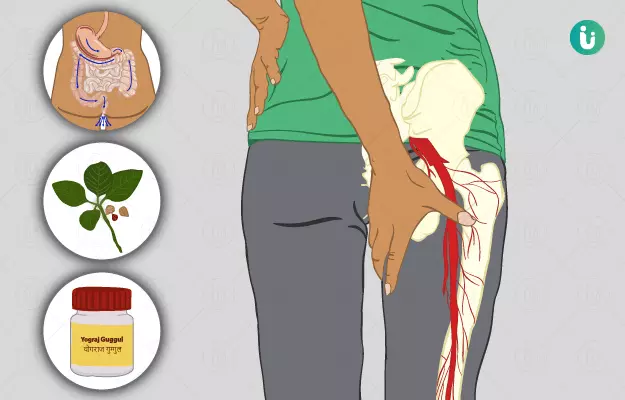Sciatica is a condition that primarily affects the lower back, causing a shooting, severe and sharp pain, which radiates to the hip, buttock, back of the thigh and inside of the leg on one side or on both sides. Weakness, numbness and sensitivity to touch can also accompany this pain, which makes it difficult to raise the affected leg. Compression of or inflammation in the sciatic nerve is the primary cause for sciatica; however, there are other causes of sciatica as well. The Ayurvedic term for sciatica is gridhrasi. It is included under the group of vatavyadhi, diseases caused due to the aggravation of vata. Vitiation in vata levels causes pain in the kandara (tendon) and snayu (muscle) of the lower limbs, which progresses to conditions like sciatica. True sciatica occurs in about 5% of the people who experience back pain.
Ayurveda uses nidana parivarjana (avoiding the causes) as the first line of treatment for gridhrasi. Shamana (pacification) and shodhana (purification) therapies such as panchakarma (five therapies), external application of medicines and massages are used to provide relief from sciatica. Herbs like shunthi (dried ginger), ashwagandha (Indian ginseng) and rasna (Indian camphorweed) with Ayurvedic formulations of dhanwantaram kwatha, sahacharadi kashaya and maharasnadi kashaya have shown beneficial effects in people with sciatica.




























